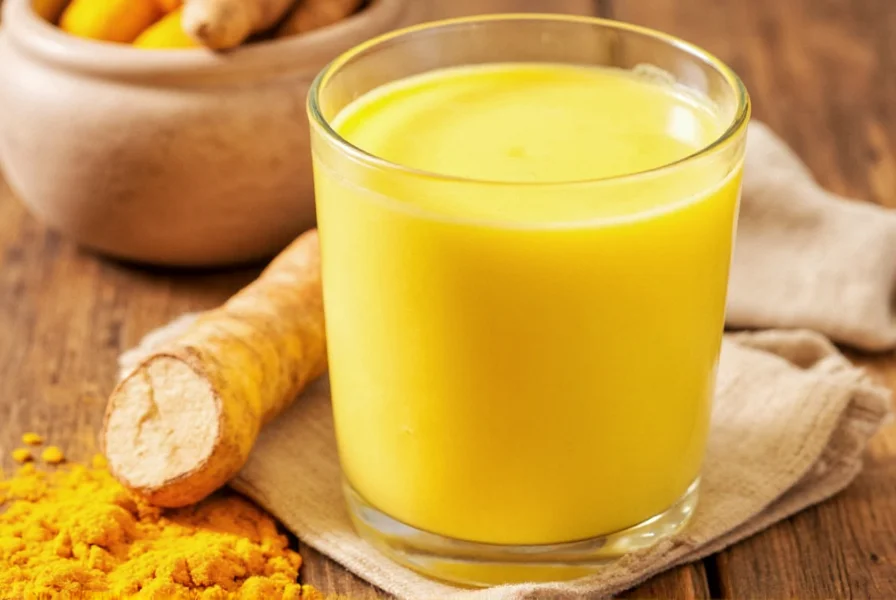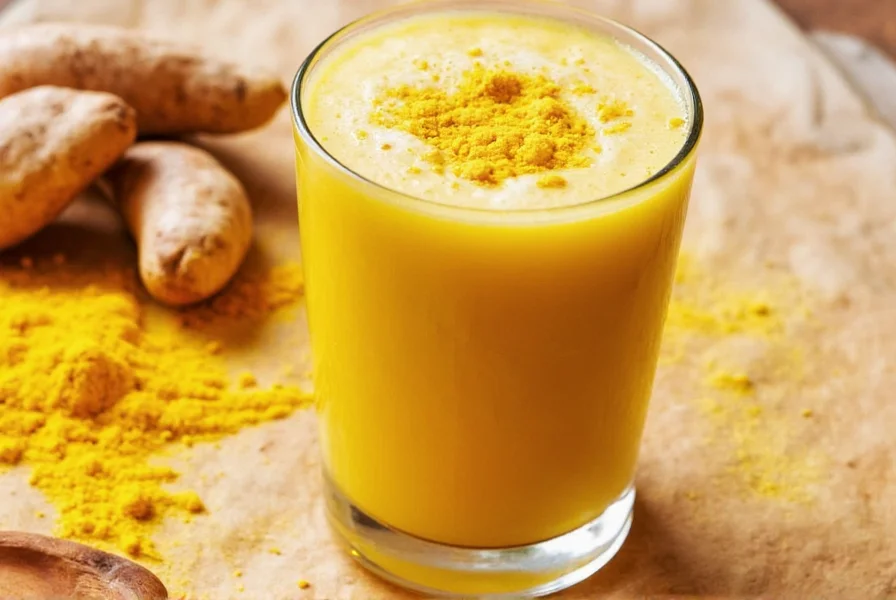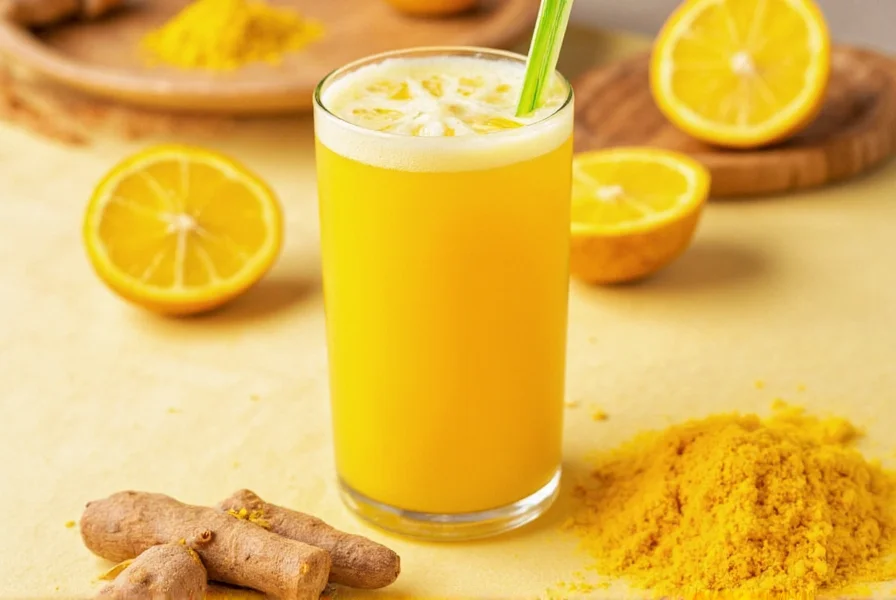For centuries, cultures across Asia have incorporated turmeric into daily wellness routines through beverages like golden milk. Modern science now validates many of these traditional uses while revealing important nuances about preparation and effectiveness. Understanding how to properly prepare turmeric drinks makes all the difference in experiencing their potential benefits.
The Science Behind Turmeric's Power
Turmeric's primary active compound, curcumin, demonstrates significant anti-inflammatory and antioxidant properties according to numerous peer-reviewed studies. However, curcumin faces a major challenge: poor bioavailability. When consumed alone, the body struggles to absorb and utilize it effectively.
Research published in Advances in Experimental Medicine and Biology shows that combining turmeric with black pepper (containing piperine) can increase curcumin absorption by up to 2,000%. Similarly, adding healthy fats like coconut oil or ghee improves absorption since curcumin is fat-soluble. These scientific insights transform how we prepare effective turmeric beverages.

Popular Turmeric Beverage Variations
While "golden milk" has become the most recognized turmeric beverage in Western cultures, numerous traditional preparations exist across different cultures:
| Beverage Type | Key Ingredients | Traditional Use |
|---|---|---|
| Golden Milk (Haldi Doodh) | Turmeric, milk, black pepper, ghee | Nighttime relaxation, joint health |
| Turmeric Ginger Tea | Turmeric, ginger, lemon, honey | Immune support, digestion |
| Turmeric Tonic Shot | Concentrated turmeric, lemon, black pepper | Morning energy boost |
| Turmeric-Lemon Water | Turmeric, lemon, warm water | Detoxification, morning cleanse |
Evidence-Based Health Benefits
When properly prepared to maximize bioavailability, turmeric beverages may offer several health benefits supported by scientific research:
- Reduced inflammation: A 2017 review in Foods journal noted curcumin's effectiveness in managing inflammatory conditions, comparable to some anti-inflammatory medications but without the side effects.
- Antioxidant protection: Turmeric combats oxidative stress, potentially reducing cellular damage according to research in Oxidative Medicine and Cellular Longevity.
- Digestive support: Traditional Ayurvedic medicine has long used turmeric drinks to support digestion, with modern studies suggesting it may stimulate bile production.
- Sleep quality improvement: The warm milk base in golden milk contains tryptophan, while turmeric's anti-inflammatory properties may reduce pain that interferes with sleep.
It's crucial to note that turmeric beverages complement but don't replace medical treatment. They work best as part of an overall healthy lifestyle.
Creating Effective Turmeric Beverages at Home
The difference between an ineffective and beneficial turmeric drink comes down to preparation technique. Here's how to make a basic golden milk with optimal bioavailability:
Basic Golden Milk Recipe with Enhanced Bioavailability
Ingredients:
- 1 cup unsweetened milk (dairy or plant-based)
- 1/2 teaspoon turmeric powder (or 1-inch fresh turmeric root)
- 1/4 teaspoon black pepper
- 1/2 teaspoon coconut oil or ghee
- Optional: 1/2 teaspoon cinnamon, small piece of ginger, pinch of cardamom
Preparation:
- Whisk turmeric and black pepper with a small amount of cold milk to prevent clumping
- Add all ingredients to a small saucepan
- Heat gently over medium-low heat (do not boil)
- Simmer for 5-10 minutes to activate compounds
- Strain if using fresh turmeric or ginger
- Enjoy warm
This golden milk recipe with turmeric maximizes absorption through the critical combination of black pepper and healthy fats. For those seeking a turmeric tea for inflammation, replace the milk with water and add fresh ginger slices.

Safety Considerations and Proper Usage
Turmeric is generally safe for most people when consumed in food amounts, but certain considerations apply:
- Dosage: Limit to 1-2 servings daily. Excessive consumption may cause digestive discomfort.
- Medication interactions: Turmeric may interact with blood thinners, diabetes medications, and certain chemotherapy drugs.
- Pregnancy: Consult your healthcare provider before regular consumption during pregnancy.
- Gallbladder issues: Those with gallstones or bile duct obstruction should avoid therapeutic amounts.
The best time to drink turmeric milk depends on your goals: evening for relaxation and sleep support, or morning for an anti-inflammatory boost. Consistency matters more than timing—regular consumption yields better results than occasional drinking.
Making Turmeric Beverages a Sustainable Habit
For lasting benefits, incorporate turmeric drinks into your routine thoughtfully:
- Prepare a weekly turmeric paste (turmeric, water, black pepper) for quick beverage assembly
- Experiment with seasonal variations—add pumpkin spice in fall, citrus in winter
- Adjust sweetness to your preference using natural options like honey or maple syrup
- Track how you feel after regular consumption to assess personal benefits
Remember that homemade turmeric beverage recipes provide more control over ingredients and quality than commercial products, which often contain insufficient turmeric or excessive sweeteners.
Frequently Asked Questions
What's the most effective way to prepare turmeric beverages for maximum benefits?
The most effective preparation combines turmeric with black pepper (for piperine) and a healthy fat like coconut oil or ghee. Heat the mixture gently for 5-10 minutes without boiling to activate the compounds while preserving their integrity. This approach significantly increases curcumin absorption compared to consuming turmeric alone.
How often should I drink turmeric beverages to experience benefits?
For consistent benefits, daily consumption is recommended. Most studies showing positive effects used daily intake. Start with one serving per day (containing 500-1,000mg of curcumin) and adjust based on your body's response. It may take 4-8 weeks of regular consumption to notice significant effects.
Can I make turmeric beverages without dairy milk?
Yes, dairy-free alternatives work well for turmeric beverages. Almond milk, coconut milk, oat milk, or even plain water serve as excellent bases. The key is including a fat source (like coconut oil or almond butter) and black pepper to enhance absorption, regardless of the liquid base you choose.
Are there any side effects of drinking turmeric beverages daily?
Most people tolerate turmeric beverages well when consumed in moderate amounts. Possible side effects from excessive consumption include digestive upset, acid reflux, or headache. Those on blood thinners or with gallbladder issues should consult a healthcare provider before regular consumption. Limit to 1-2 servings daily for safety.
How does fresh turmeric compare to powdered turmeric in beverages?
Fresh turmeric root contains slightly different compounds than dried powder and may offer marginally higher curcumin content. However, powdered turmeric provides more consistent dosing and is more convenient. Both work well when combined with black pepper and fat for absorption. Fresh turmeric requires grating or juicing, while powder can be measured precisely.











 浙公网安备
33010002000092号
浙公网安备
33010002000092号 浙B2-20120091-4
浙B2-20120091-4